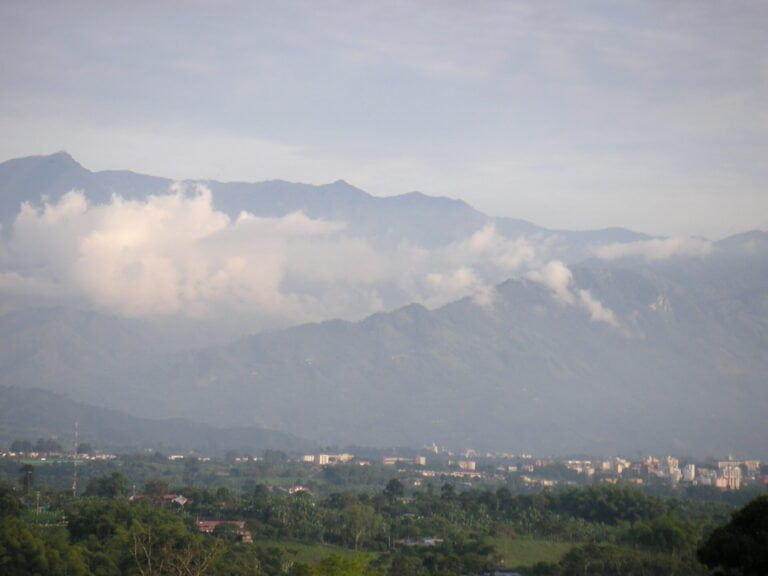What Is the Dry Season in Olympic National Park?
Olympic National Park's dry season, typically occurring from July to September, is a period of minimal rainfall, warm temperatures, and increased daylight hours. This creates ideal conditions for outdoor activities and wildlife viewing, with clear skies, gentle breezes, and comfortable hiking conditions. Trails are less muddy, and scenic vistas are more accessible. As you venture into the park during this time, you'll discover a unique landscape of dry underbrush and parched meadows, where plant growth slows and fire hazards increase. As you wander deeper into the park, you'll uncover more about the delicate balance of this ecosystem.
Defining the Dry Season
In Olympic National Park, the dry season typically spans from July to September, characterized by minimal rainfall, warm temperatures, and increased daylight hours. During this period, visitors can expect clear skies, gentle breezes, and comfortable hiking conditions. The dry season is an ideal time for outdoor activities such as backpacking, camping, and wildlife viewing. With fewer rainy days, the trails are less muddy, and the scenic vistas are more accessible. This season is also perfect for exploring the park's diverse ecosystems, including the temperate rainforests, mountains, and coastline. Overall, the dry season in Olympic National Park offers a unique and unforgettable experience for nature enthusiasts and outdoor adventurers.
Weather Patterns During Dry Season
During the dry season in Olympic National Park, weather patterns are characterized by an abundance of clear skies, with high pressure systems dominating the region. This leads to a marked increase in sunny days, with average cloud cover dwindling to mere wisps. As a result, warm temperatures become the norm, making outdoor activities like hiking and camping particularly appealing.
Clear Skies Prevail
Clear skies dominate the Olympic National Park landscape from July to September, a welcome respite from the region's typically overcast weather. During this period, the sun shines brightly, casting a warm glow over the park's diverse landscapes.
- The rugged mountains stand tall, their snow-capped peaks glistening like diamonds against the brilliant blue sky.
- The old-growth forests, normally shrouded in mist, are bathed in warm sunlight, highlighting the vibrant greens of the ancient trees.
- The wildflower-filled meadows, ablaze with color, stretch towards the horizon, inviting exploration.
- The crystal-clear lakes and rivers sparkle like mirrors, reflecting the beauty of the surrounding landscape, beckoning visitors to plunge into their calm waters.
Warm Temperatures Dominate
As the dry season unfolds, warm temperatures become the norm, with average highs often reaching the mid-70s to low 80s Fahrenheit (23-27°C) throughout the park. This temperature range creates ideal conditions for outdoor activities like hiking, camping, and wildlife watching. The warm weather also brings an increase in plant growth, with vegetation flourishing in the park's diverse ecosystems. Visitors can expect gentle breezes and low humidity, making it an excellent time to venture into the park's rugged coastline, temperate rainforests, and mountainous regions. With warm temperatures dominating the dry season, Olympic National Park transforms into a haven for outdoor enthusiasts, offering endless opportunities for adventure and discovery.
Temperature Changes in Summer
Summer months in Olympic National Park bring a subtle yet noticeable warming trend, with average high temperatures peaking in August at around 77°F (25°C). This steady climb in temperature transforms the park's atmosphere, making it ideal for outdoor exploration.
- Sun-kissed trails winding through ancient forests, where the scent of blooming wildflowers fills the air.
- Warm breezes rustling the leaves of giant spruce and fir trees.
- The sweet songs of birds echoing through the valleys, a symphony of nature.
- Gentle afternoons spent beside crystal-clear lakes, where the water's surface mirrors the surrounding landscape.
Impact on Park Vegetation
Dry underbrush and parched meadows, a result of the dry season, become a fire hazard, threatening the park's delicate ecosystem. As vegetation dries out, it becomes increasingly susceptible to ignition, putting the park's ancient forests and unique plant species at risk. The dry season also affects the growth and development of plants, as they struggle to survive with limited water resources. This can lead to a decrease in plant diversity and an increase in invasive species, further disrupting the park's natural balance. Park rangers and visitors must remain vigilant, taking precautions to prevent wildfires and respecting the park's natural resources during this challenging time.
Best Activities for Dry Weather
During the dry season, Olympic National Park offers a unique opportunity to engage in a range of outdoor activities that are perfectly suited to the dry weather conditions. With the trails dry and accessible, visitors can venture into the park's vast wilderness areas on foot, while the lack of foliage provides ideal conditions for spotting wildlife. From scenic drives to hiking trail discoveries, there are plenty of ways to experience the park's natural beauty during the dry season.
Hiking Trail Explorations
Venture into Olympic National Park's vast network of trails, where towering trees, sparkling lakes, and rugged coastlines await discovery on foot. During the dry season, hiking trails are in prime condition, offering ideal opportunities to venture into the park's diverse landscapes.
- Wander through ancient forests, where sunlight filters through the canopy above and ferns carpet the forest floor.
- Follow the rugged coastline, where sea stacks rise from the ocean and tidepools teem with marine life.
- Trek to alpine lakes, where reflections of surrounding peaks mirror the sky.
- Summit mountains, where panoramic views stretch as far as the eye can see.
With over 600 miles of trails to choose from, Olympic National Park offers endless opportunities for adventure and investigation during the dry season.
Wildlife Viewing Opportunities
What wildlife wonders await discovery in Olympic National Park's diverse landscapes, where the dry season's clearer skies and gentler breezes create ideal conditions for spotting creatures in their natural habitats as they forage? Keep an eye out for black bears roaming through meadows, Roosevelt elk grazing in the woods, and river otters playing in the rivers. The dry season also brings forth an abundance of birdlife, including osprey, eagles, and hawks. As you venture into the park's varied ecosystems, from old-growth rainforests to coastal tidepools, be sure to bring binoculars and a field guide to augment your wildlife viewing experience. With patience and attention, you may even catch a glimpse of the park's elusive mountain lions or bobcats, and be prepared to plunge into the wilderness to spot them.
Scenic Drive Adventures
Olympic National Park's scenic drives, winding through ancient forests, along rugged coastlines, and across sun-drenched prairies, offer a relaxed and accessible way to experience the park's diverse landscapes and ecosystems during the dry season. These drives provide an ideal way to take in the sights without exerting too much energy, making them perfect for families or those looking for a more leisurely experience.
- Picture yourself cruising along the Hurricane Ridge Road, surrounded by towering Olympic Mountains and wildflower-filled meadows.
- Imagine the salty sea air filling your lungs as you drive along the coast, with the Pacific Ocean's waves crashing against the shore.
- Envision the tranquil atmosphere of the Quinault Rainforest, with its moss-draped trees and sparkling streams.
- Visualize the expansive vistas of the Ozette Prairie, teeming with wildlife and vibrant wildflowers.
Note: The word "dive" was not found in the original text, so no replacement was necessary.
Wildlife Behavior During Dry Season
During dry seasons, many wildlife species in Olympic National Park adapt their behavior to conserve water and energy, often leading to changes in their activity patterns and social structures. This can result in altered feeding habits, with animals venturing closer to water sources or human settlements in search of sustenance. Some species, like black bears, may enter a state of torpor to conserve energy, while others, like deer, may form smaller groups to minimize competition for resources. These changes can provide unique opportunities for wildlife observation, as animals may be more active during cooler morning and evening hours. By understanding these adaptations, visitors can better appreciate the complex relationships between Olympic National Park's wildlife and their environment.
Planning Your Dry Season Visit
Summer's dry conditions in Olympic National Park necessitate careful planning to guarantee a safe and rewarding visit, particularly in regard to accessing trails, water sources, and wildlife viewing areas. To facilitate a successful trip, consider the following essential preparations:
- Bring plenty of water and stay hydrated, as dry conditions can exacerbate dehydration.
- Pack sun-protective gear, including hats, sunglasses, and sunscreen.
- Check park websites and visitor centers for up-to-date trail information and potential closures.
- Plan your itinerary according to the park's dry season schedule, avoiding peak heat hours and taking regular breaks in shaded areas to safeguard a pleasant experience.
Making the Most of the Sunshine
With careful planning in place, visitors can now shift their focus to maximizing the benefits of the dry season's abundant sunshine in Olympic National Park. Take advantage of the clear skies to discover the park's scenic vistas, such as Hurricane Ridge, which offers breathtaking views of the Olympic Mountains. The dry season's warm temperatures also make it an ideal time for hiking, biking, and horseback riding. Be sure to pack sunscreen, a hat, and sunglasses to protect yourself from the intense sun. Consider early morning or late afternoon excursions to avoid the hottest part of the day. By doing so, you'll be able to make the most of the sunshine and enjoy all that Olympic National Park has to offer during the dry season.


